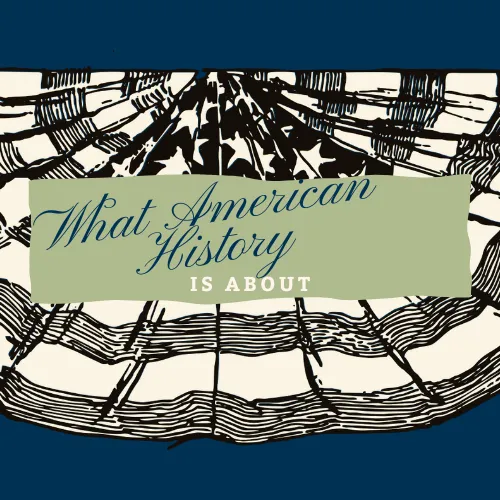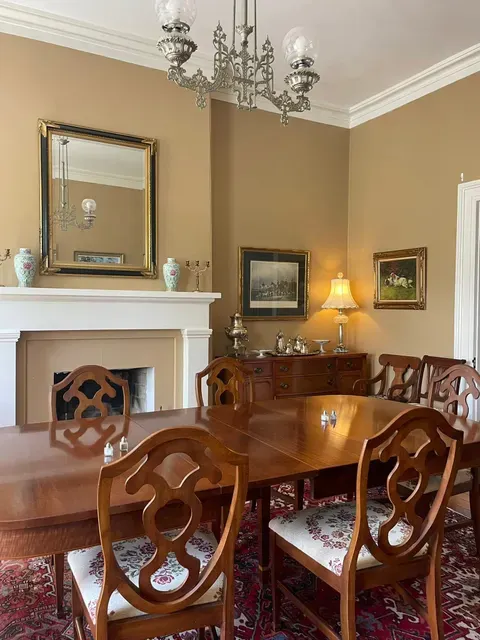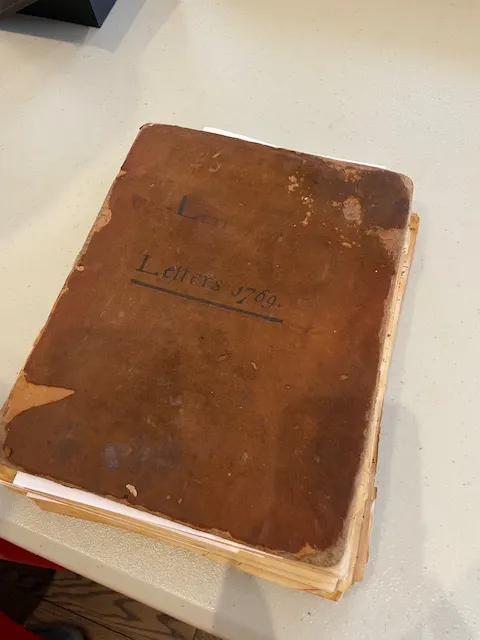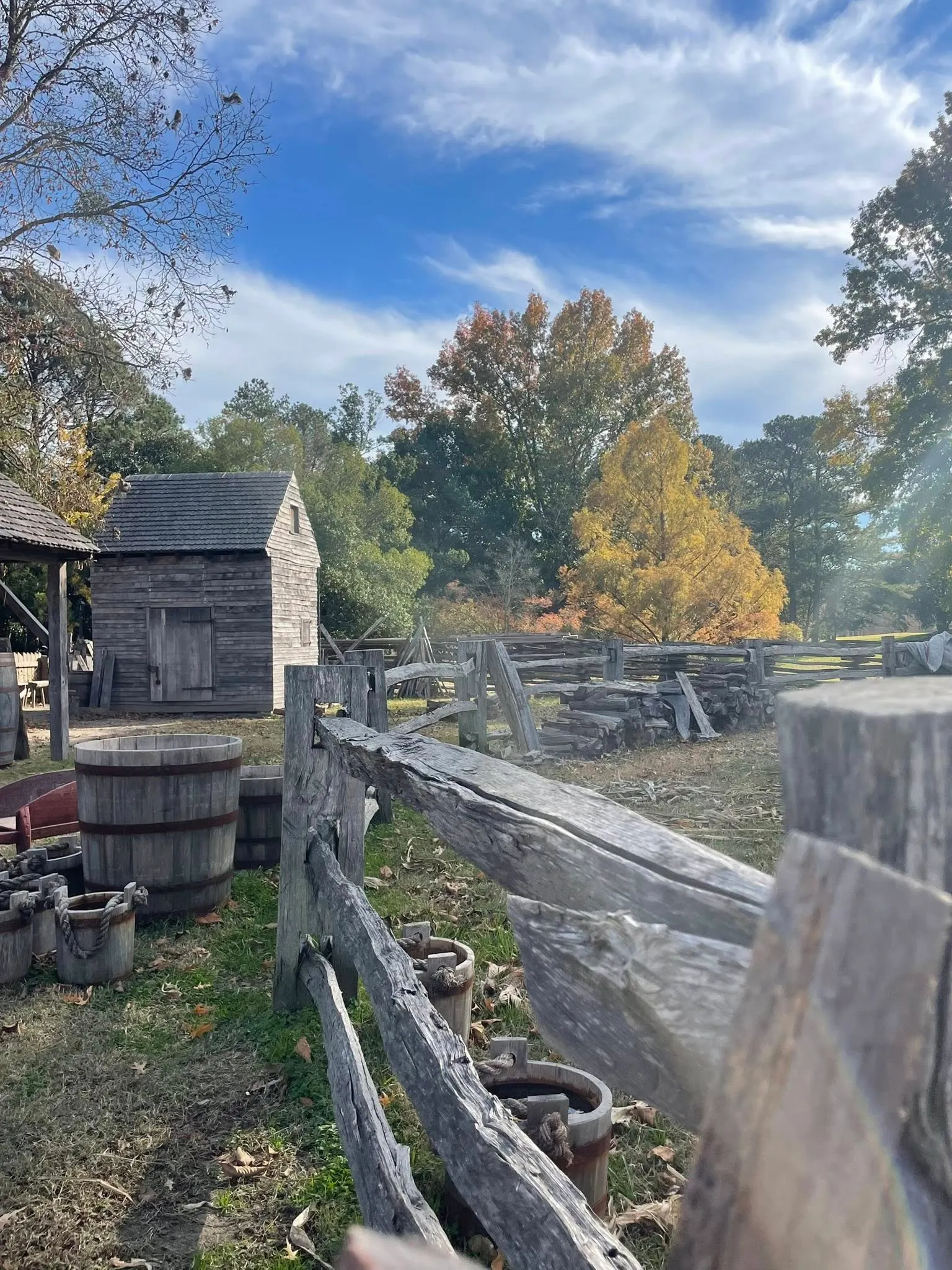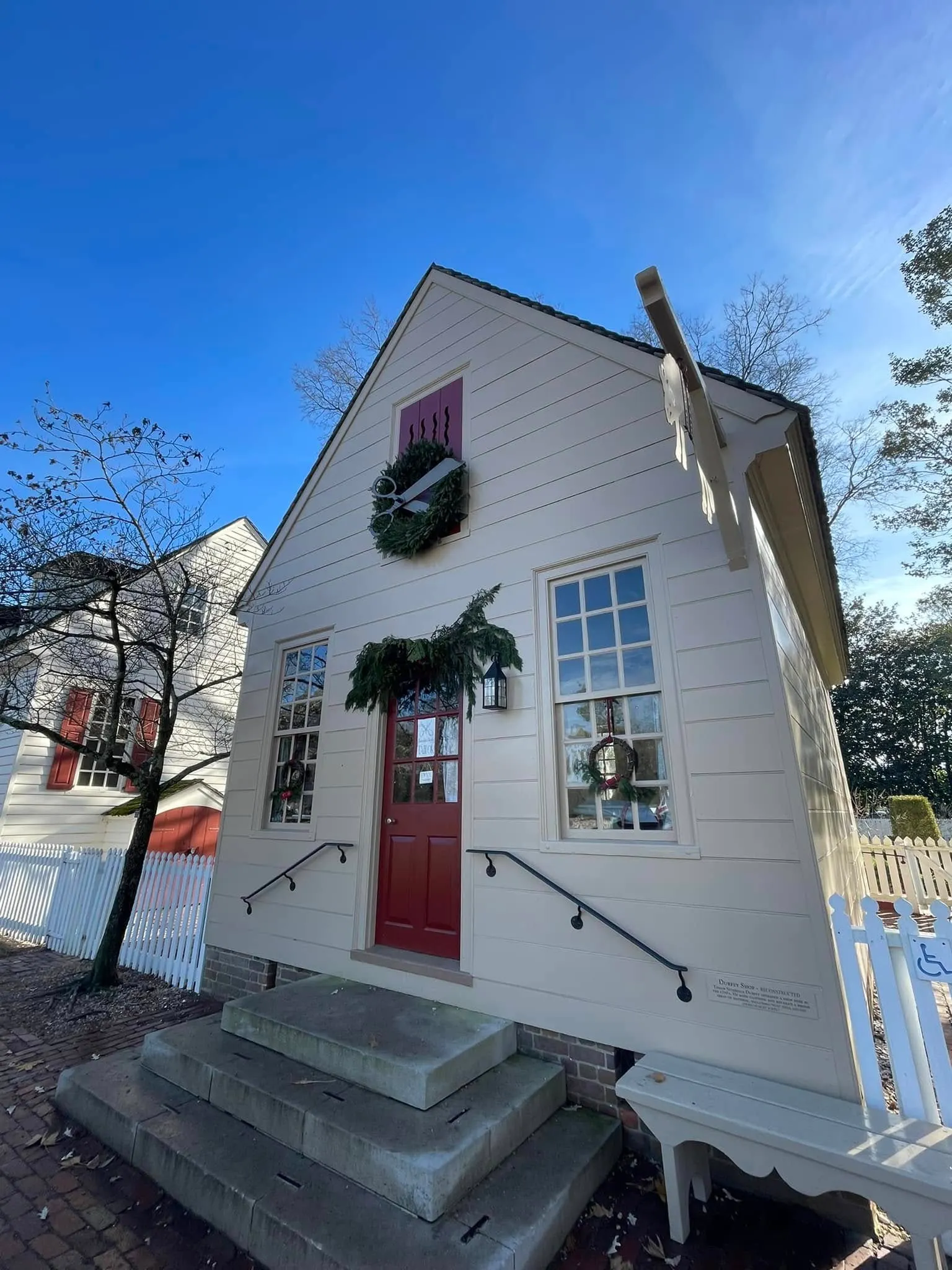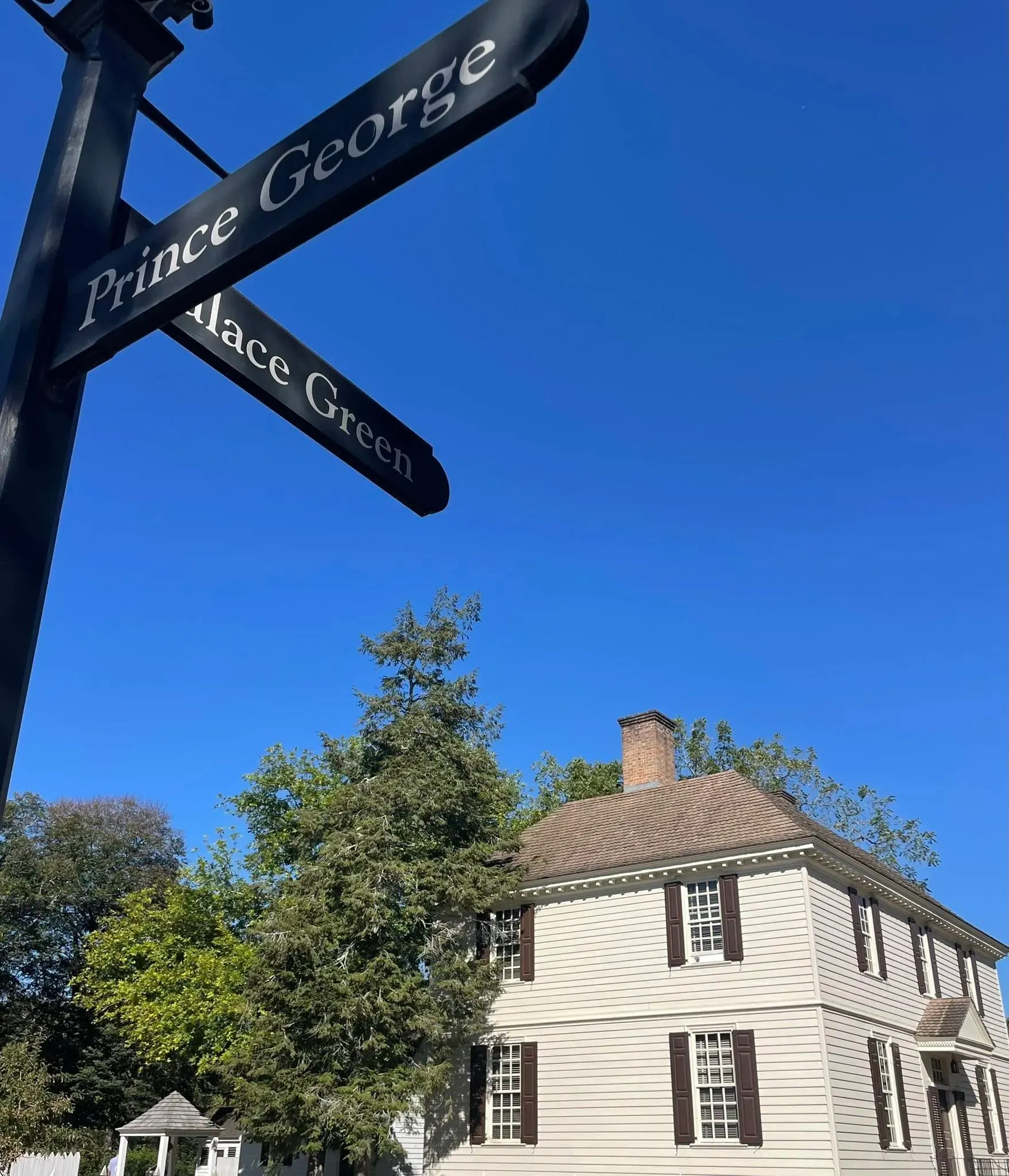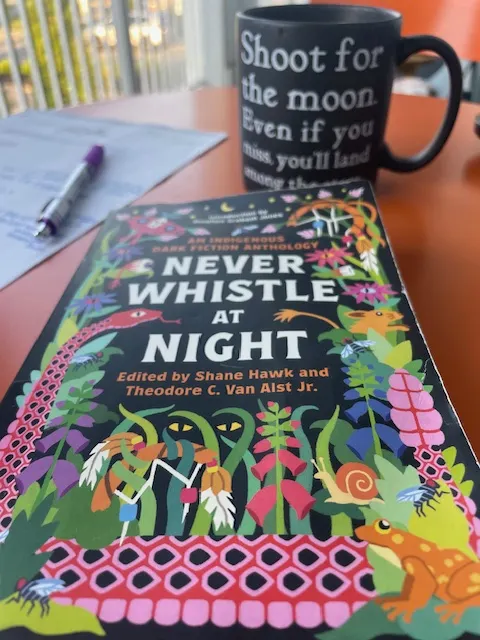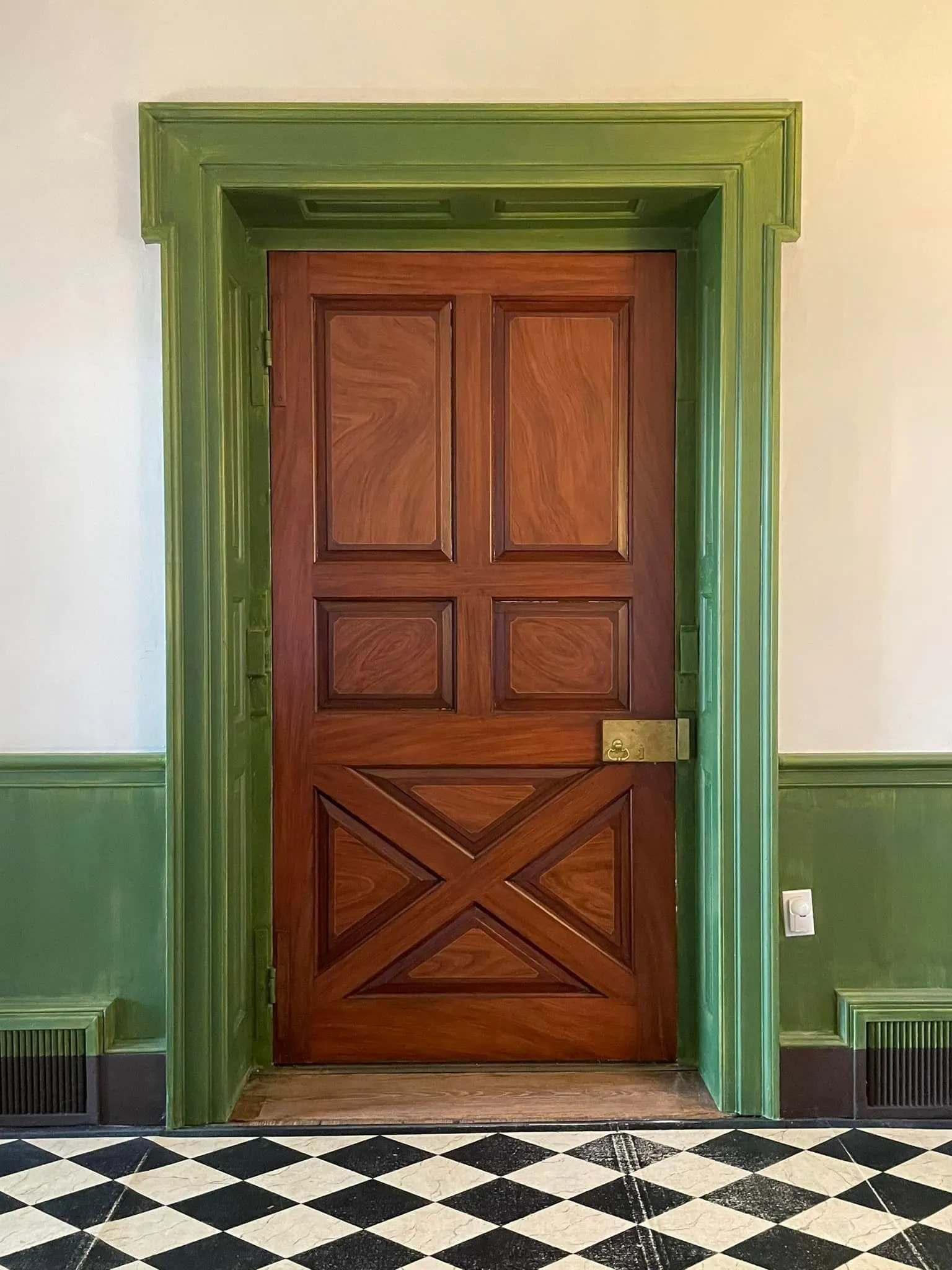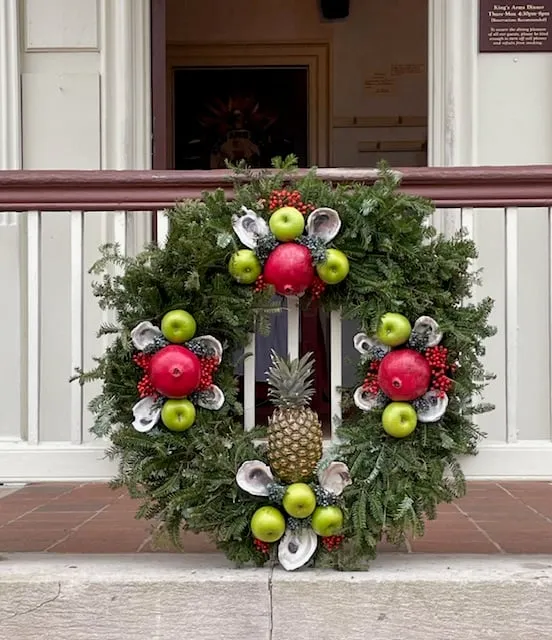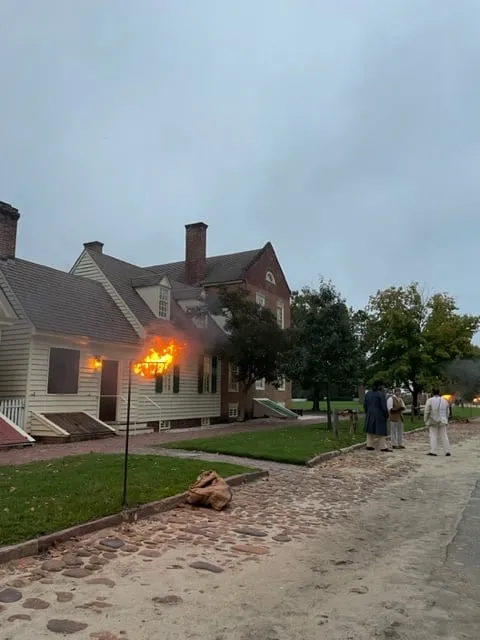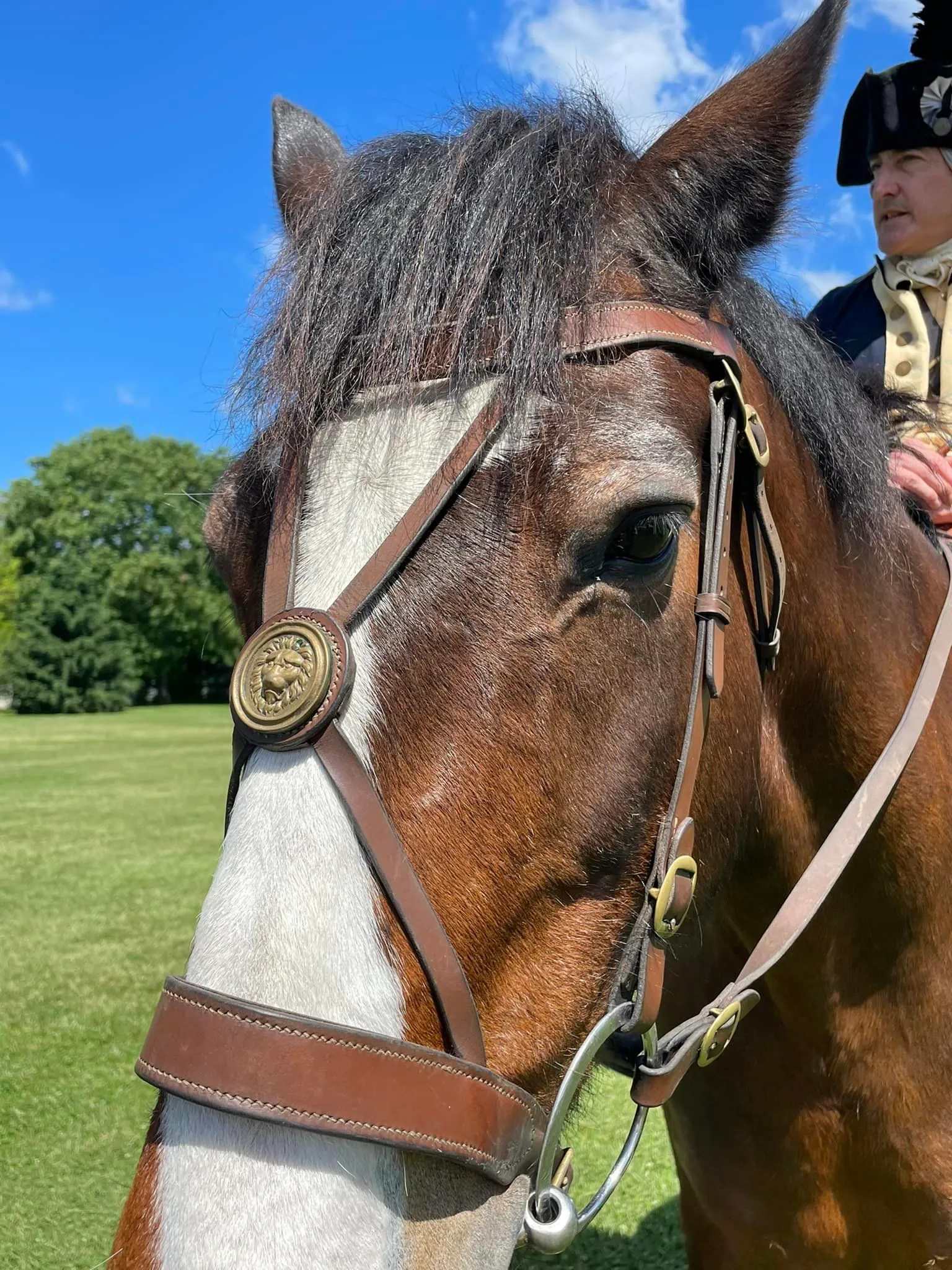Experience History Firsthand: The 19th Century Essex Inn and its 18th Century Counterpart, the 1710 Tavern
In 1851, Dr. Roane built a house on what was already historic land.
Dr. Lawrence Roane built a home in the well-regarded Greek Revival style and in 2025, it's open to the public for your stay in Essex County.
I've driven past the historic Essex Inn on previous visits to Tappahannock, Virginia. In fact, I've written on this blog, that one of my goals was to visit it. Thanks to the shared love of history I have with the owner, I've met that goal. In fact, I also got to see the recently restored 1710 Tavern across the street!
Now I want to share this amazing bit of American history with you, my fellow history-lovers. This post wouldn't be possible without the passion of history-lovers, so that's an important place to start.
RELATED: Open the website for The Essex Inn in a new tab and plan your visit!
Necessary disclaimer: As a blogger, I use affiliate links sometimes! I may receive commission from purchases I share; it does not change your price but sometimes you might get a discount.
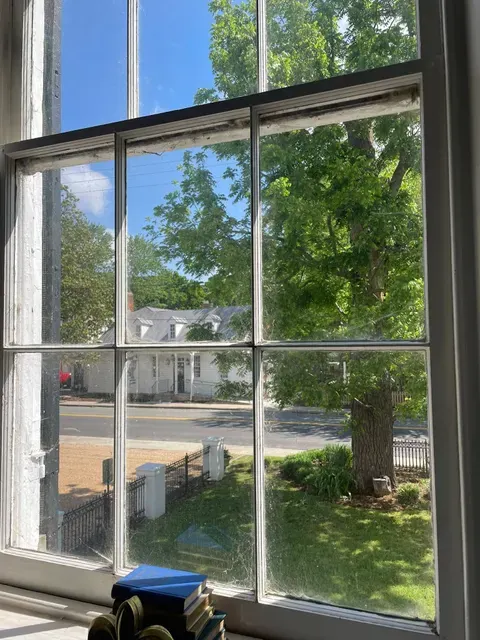
View of 1710 Tavern from inside The Essex Inn
Meet the Huffs.
From the porch to the parlor, Greg told me their story.
When I arrived at The Essex Inn, Greg Huff was sipping coffee on the porch. And talking history with owners of another historic site. I couldn't have felt more welcome and "in the right place" at that moment.
Sitting on that front porch and talking about history is something Greg is known for in fact.
Then I found out a few moments later he was meeting with Stratford Hall's Dr. Gordon Blaine-Steffey later that week and I KNEW I was in the right place.
RELATED: Click here to open my interview with Gordon.
Why Essex County and why the old Roane house?
My first question to Greg: why Essex County, Virginia and why this building? As a former history teacher whose wife shares his passion for it, they'd wanted to do something hospitality-related in an historic site.
Living in North Carolina, and with Covid changing the world, they took the time to search out opportunities; to preserve history and live life to the fullest.
Fortunately for those of us who love exploring places like The Essex Inn, they came across it in their search around a state rich with early United States history: Virginia.
The old Greek Revival built by Dr. Roane had been a Bed and Breakfast since the early 2000s, but was in foreclosure in 2021.
If you seek history, you can find it... and also preserve it. No matter your background. To me, this is the inspiration Greg and Jennifer Huff bring to the table.
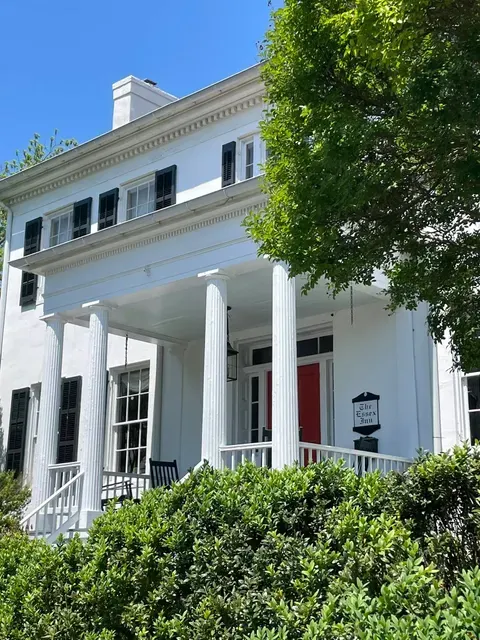
Entrance to Essex Inn, spring 2025
Relationships are sooo important.
Currently a member of the Essex County Museum and Historical Society Board, Greg, as well as his wife Jennifer, have truly become vital to the preservation of United States history. Not just local history.
With the addition of the 1710 Tavern, they've not only added a fine dining option for visitors, but also brought a tavern back to life. One whose history runs deep, including having ties to our American Revolutionary War.
I mentioned at the start that I found Greg on the front porch with owners of another historic site discussing collaboration opportunities. It's both intentional and happenstance for this amazing couple.
People bring them objects.
This is often with the goal of ensuring something from the past gets to live in a place where it is seen and appreciated.
Examples: pewter in the tavern and the 300-year old walnut from a fallen tree, offered to them by the owner. It currently lives as the bar-top at the tavern.
The stories of how these object arrive to the Huffs are told to visitors. And the connections to the 18th and 19th centuries are FELT; brought to life.
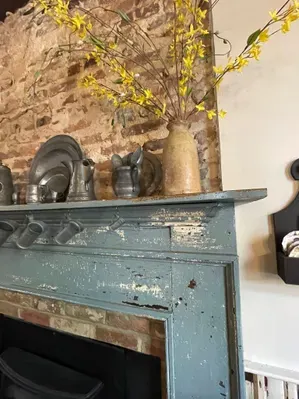
Pewter on mantel in 1710 Tavern
Partnerships restore and resurrect the past.
Bringing other people into the restoration of the Essex Inn was both educational and vital to preservation.
From the plaster molding to the paint color, the Huffs researched heavily. They contacted experts.
Example: They brought in the University of Virginia's Department of Architecture (who explained the purpose of having a what looks to be a double molding in the main entry hall). The craftsmanship gives depth, and offers up an elevated (and fancier!) look. Something I personally associate with 19th century design.
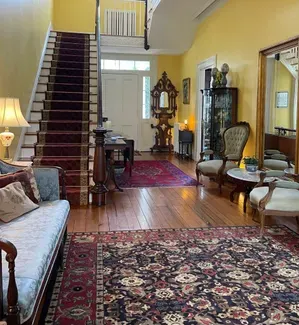
Entry hall of The Essex Inn
Sharing history with the next generation.
Greg told me about one of the coolest things I've encountered in this blogging journey. His interest in archaeology and paying it forward with his current projects.
When he was a child, his family visited Historic Shirley, a 17th century property, still home to the Carter family who built their plantation on the land.
After the house tour, he saw some digging being done outside and wandered over. Following hours of discussion with the archaeologist, who turned out to be renowned archaeologist Ivor Noel Hume, a spark was ignited.
That experience led Greg on the path here, back to Virginia. And, importantly, influenced him to create a kids' archaeology day at the 1710 Tavern property's excavation site.
He's doing what he can to inspire more children to explore and preserve our shared history!
RELATED: You can click here to open a new tab and read about Hume and here to learn more about Historic Shirley.
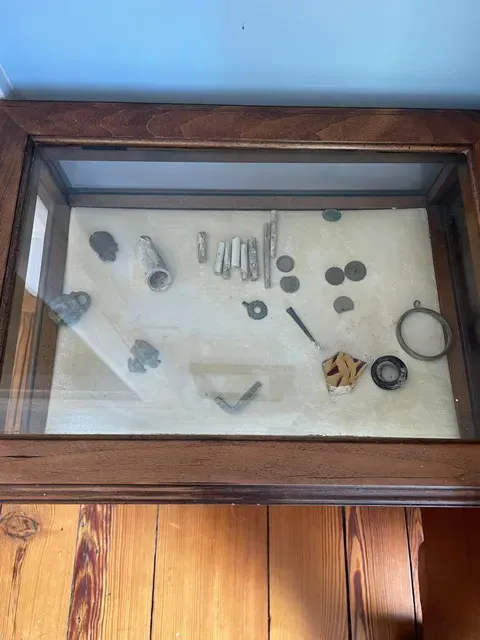
Artifacts from excavation of property
The Essex Inn.
Who lived here.
The Roanes.
Dr. Lawrence Roane had two sons--and that's where this branch of the family line ended. Elder son Thomas died of drowning during the Civil War and younger son Lawrence inherited the home, but did not have any children.
Thank goodness the Huffs have gotten involved! Greg shared his goal of keeping the history of the property, and the family, alive.

Roane sons: Thomas (left) Lawrence (right)
The enslaved.
There's a view of the former kitchen and laundry from the back windows of The Essex Inn. As I've learned was often the case, it's where the enslaved both worked and lived. It's important to mention for so many reasons.
As I've ventured around some of these historic sites, I'm blown away by the close relationships the current owners and stewards of them have with the descendants of the enslaved.
The Essex Inn is no exception: the Huffs have had descendants visit and see where their ancestors both lived and worked. The emotion in that thought is breathtaking.
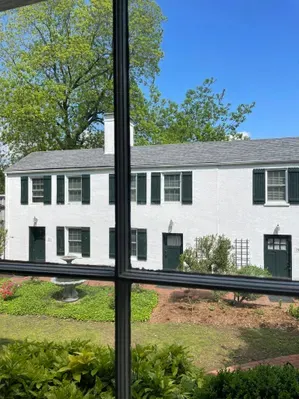
Kitchen, laundry, enslaved quarters
Meriweather Smith.
Before Dr. Roane built the Greek Revival mansion on the site... an integral "player" in American Independence lived on the property. There was a smaller brick home on the site, where a man named Meriweather Smith lived.
Having his home directly across from the location where discussions and actions related to the American Revolution took place, Meriweather Smith is worth meeting.
A few notes about Smith:
- he was an Essex County Burgess during the pivotal pre-Revolutionary years
- he signed the Leedstown Resolves, drafted by Richard Henry Lee of Westmoreland County in 1766
- he attended Patrick Henry's famous "liberty or death" speech at St. John's Church in Richmond
RELATED: This post honoring the 250th anniversary of Patrick Henry's famous speech.
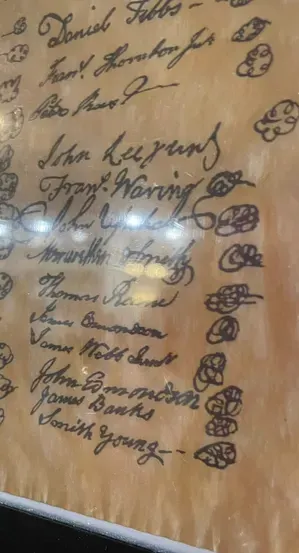
Smith's signature, Leedstown Resolves
The building and restoration.
The Essex Inn as Roane built it is "an imposing Greek-Revival style structure of white stucco over brick atop a high English basement" as described on the Huffs' website.
From the 1830's oil lamp chandelier in the dining room to the grand entry hall, this building is an architectural jewel, inside and out.
While there are people who bring them pieces of art, furniture, etcetera, the Huffs actively researched what should and could be in the building. They utilize auctions as well as word of mouth to furnish the home, as well as the 1710 Tavern.
Oil lamp chandelier in the dining room.
The 1710 Tavern.
The people whose presence you can feel.
Clearly, a building this old in Virginia has a vibe. And you feel it walking in and around the 1710 Tavern.
Two things that moved me:
1- The view of the Essex Inn through the front windows. I pictured Meriweather Smith looking onto his brick house and thinking about the future of his family and his country.
Doing this while discussing everything from the Stamp Act to the creation of the Leedstown Resolves. Both with fellow men of Essex County and visitors. Did Thomas Jefferson look out the same window as me? Smith likely did.
2- The framed copy of the Leedstown Resolves. Some historians (many?) would say signers of these resolutions, drafted by Richard Henry Lee, were first to take on the British Stamp Act "tyranny."
RELATED: Click here to open a new tab to read more about the Leedstown Resolves.

Framed copy of Leedstown Resolves
The building and restoration.
As Greg peeled back the layers and dig into the ground (both literally and figuratively) a TON of history emerged.
Much of the restoration was actually done, as well as managed, by Greg. And as mentioned above, history-lovers came forward!
I learned that in 1740, Tappahannock was bustling. It was one of the more populated towns in Virginia, putting Essex County on the map. 3000 people lived there - 1000 more than the approximately 2000 residents it is home to in 2025.
The original section of the tavern dates to 1710, with additional square footage added later. It was one of seven taverns in town by the mid-18th century.
The Huffs possess a 1731 menu and tavern license, giving context to the history they're researching and resurrecting. Documents like these help build the timeline as well give insight into a property's use and the people who stepped through the door.
Cool bits I got to see:
- original fireplaces and chimneys (insurance documents back this up)
- window glass dating to 1710-20 (so yes, the same windows Smith looked through!)
- original floorboards
- a little red building behind the tavern that dates to the 1800s...more to come as the Huffs continue their work!
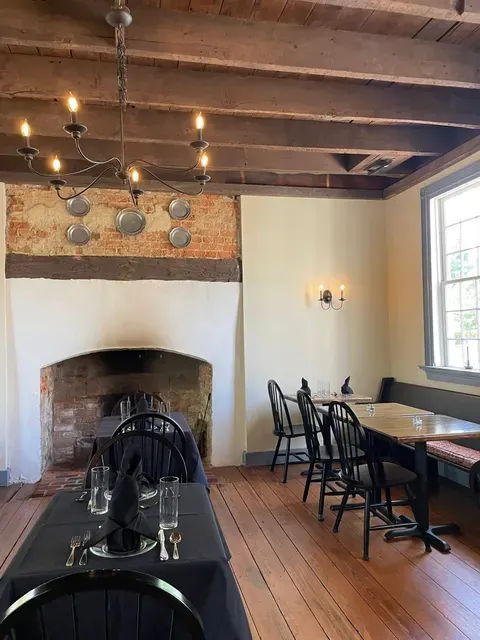
Interior view, dining room of 1710 Tavern
Calls to action.
For you:
- Book a room at The Essex Inn.
- Make a reservation at the 1710 Tavern.
- Contact me via messenger on Facebook or Instagram if you'd like to purchase a customized itinerary for your visit to the region - yes, an experience based on your specific interests.
- Download the Explore Here app to use as you wander Essex County (or anywhere looking for history in the nation!).
For me: continue diving into the history of Essex County as it relates to both the 18th and 19th century American history. The impact of what happened there stretches across our United States.
Two properties. Two and a half hours. So much learned. I'm truly inspired!
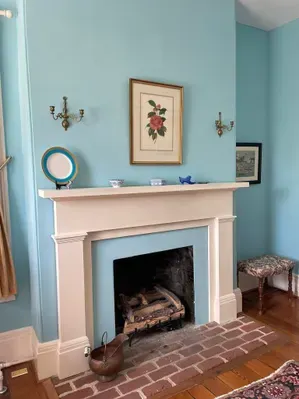
Blue room at The Essex Inn
Closing words from history.
I'm certain that I'll share more details learned on my visit to Essex County- I'm always thinking of more and more topics based on an experience like this one! In the meantime, get to know Essex County's Meriweather Smith a bit.
Today's closing words were written to Thomas Jefferson by Smith, along with his Virginia colleagues in Philadelphia, James Madison and Theodorick Bland. This was during the final months of Jefferson's time as Virginia's 2nd Governor.
Topic: money for arms needed in Virginia. (note: I've broken one long paragraph into many for ease of reading)
For full letter with citations, click here and open a new tab in the Founders' Archives.
Virginia Delegates to Thomas Jefferson, 27 April 1781
Virginia Delegates to Thomas Jefferson
Philadelphia April 27th 1781
Sr. Having discovered that there were a considerable number of Rampart Arms belonging to the U. S. at this place, which have long lain dormant, (having been supposed useless for the Field,) we have found on enquiry that with a small alteration, and fixing Bayonettes to them they are capable of being renderd exceeding good Field Arms;
& knowing the necessity of the State for a Supply of that article we have been extreemely desireous to have them alterd and Sent on with all possible dispatch; we flatterd ourselves that this might have been done expeditiously by the Intervention of some Virginia Merchants who had money in this City which they offerd to dispose of for the purchase of the Arms from the Continent;
to have them fitted and transported at their own expence, and on their arrival in Virginia giving the State the offer of them upon terms yeilding them a reasonable Profit for their trouble and expence in so doing;
but when they gave in their proposals to us in writing, we were extreemely sorry to find that what would yield them a profit, (far short as they informed us of what might be obtaind by vesting their money in other Articles of Commerce,) greatly exceeded any allowance we thought ourselves Justifiable in agreeing they shd. receive, especially when we considerd the low1 condition of the treasury of the State, and that we must engage the faith of the State for the Immediate advance of one half the Money, and the payment of the other half on the delivery of the Arms.2
Are you enjoying the blog? Help me make it an income-earning business! Use my online tip jar and buy me a coffee:
There is a huge practical disclaimer to the content on this blog, which is my way of sharing my excitement and basically journaling online.
1) I am not a historian nor an expert. I will let you know I’m relaying the information as I understand and interpret it. The employees of Colonial Williamsburg base their presentations, work, and responses on historical documents and mainly primary sources.
2) I will update for accuracy as history is constant learning. If you have a question about accuracy, please ask me! I will get the answer from the best source I can find.
3) Photo credit to me, Daphne Reznik, for all photos in this post! All photos are personal photos taken in public access locations or with specific permission.
